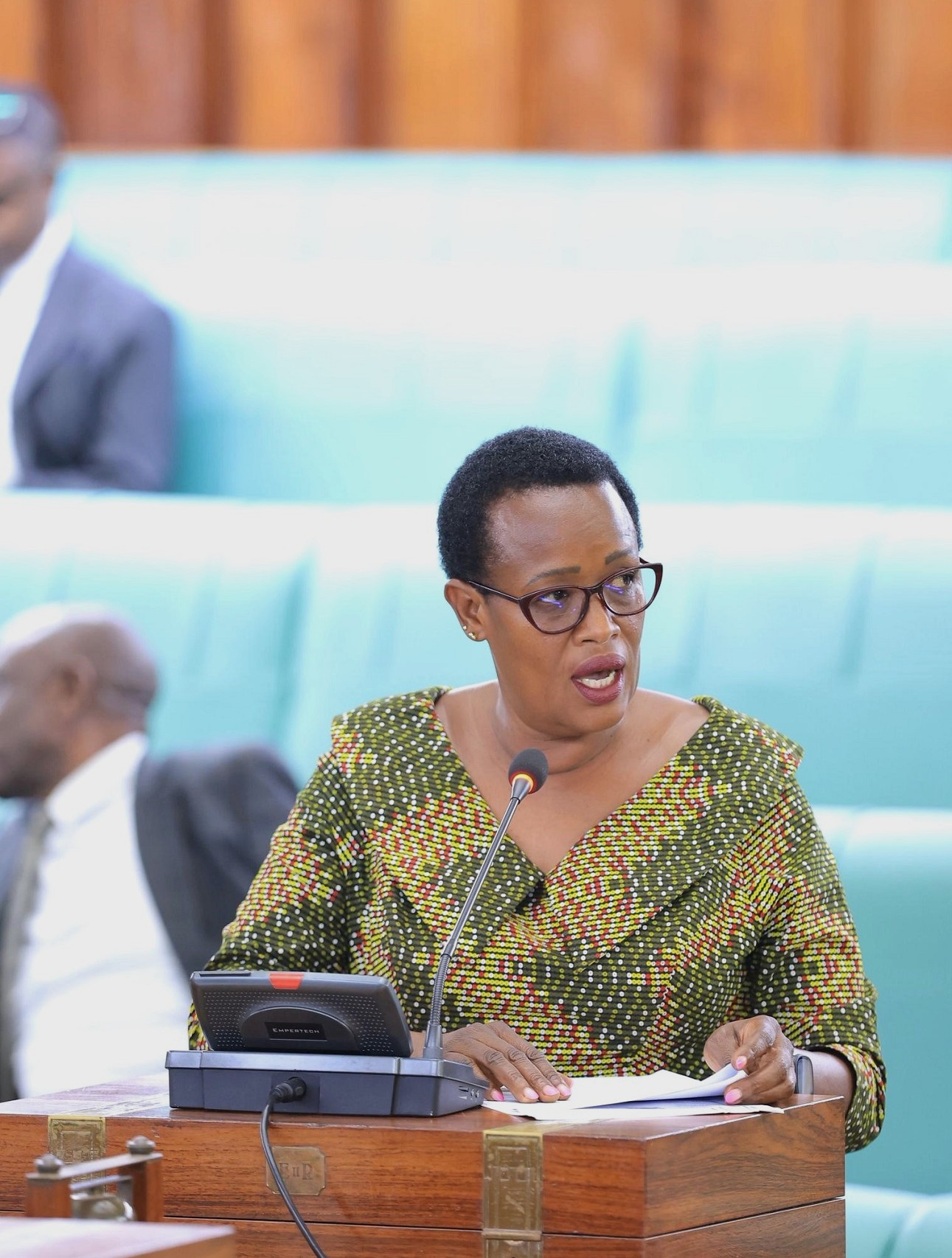KAMPALA, September 10, 2025 –- The Speaker of Parliament Anita Among has deferred the debate over Lake Bunyonyi pollution to next Thursday to incorporate broader parliamentary perspectives.
The presiding officer’s guidance follows protest from John Baptist Nambeshe, the Chief Opposition Whip, in response to the statement presented by the Minister of State for Water and Environment, Aisha Sekindi, on the lake’s alarming brownish discolouration, foul odour, oily film, and white foam.
“It is disappointing that the minister is still promising a future report,” he said during the plenary sitting on Tuesday, proposing that the Shadow Minister for Water and Environment, Christine Kaaya and also Kiboga District Woman Representative, compile a parallel report for a thorough debate.
Minister Sekindi, in her presentation, said the ministry has initiated technological upgrades to treat the lake’s water, employing enhanced filtration and chlorination processes to ensure compliance with usability standards, adding that they will continue monitoring and conducting scientific research, with a comprehensive report to be presented to Parliament soon.
She attributed the lake’s condition to a combination of natural and human-induced factors.
“When deeper, colder water mixes with warmer surface water, it increases turbidity. This phenomenon, often triggered by heavy rainfall and temperature fluctuations, is exacerbated during Uganda’s dry and wet seasons, affecting not only Bunyonyi but also other lakes in the region,” she explained.
According to the minister, the lake’s location in a valley with steep slopes makes it vulnerable to runoff from surrounding agricultural farms, settlements, stone quarrying, and iron ore mining activities.
This contributes to siltation, resulting in brown discolouration. Degraded shorelines allow direct runoff into the lake, further deteriorating water quality.
She also explained that poor waste management from markets, car washing bays, and other establishments around the lake are contributing to low oxygen levels, oily films, foul odour, and white foam.
“Water quality tests confirmed critically low oxygen concentrations, threatening the lake’s ecosystem and its viability as a safe water source,” she stressed.
To address high turbidity, the National Water and Sewerage Corporation [NWSC] is upgrading its water treatment infrastructure, enhancing filtration and chlorination to meet safety standards.
Additionally, the ministry is scaling up catchment protection measures, including promoting sustainable farming, establishing bench terraces, constructing soil and water conservation structures, and initiating tree-planting programmes.
As immediate actions, the ministry will provide alternative income sources for upstream communities to incentivise catchment protection and collaborate with local governments to improve sanitation and waste management facilities at Harutindo Landing Centre Market, preventing direct waste discharge into the lake.
“These measures aim to restore L. Bunyonyi’s ecological balance, ensuring its sustainability for aquatic life and local communities,” Sekindi assured the legislators.
https://thecooperator.news/indigenous-fishermen-to-take-lead-in-protecting-lakes-museveni-directs/
Buy your copy of thecooperator magazine from one of our country-wide vending points or an e-copy on emag.thecooperator.news
